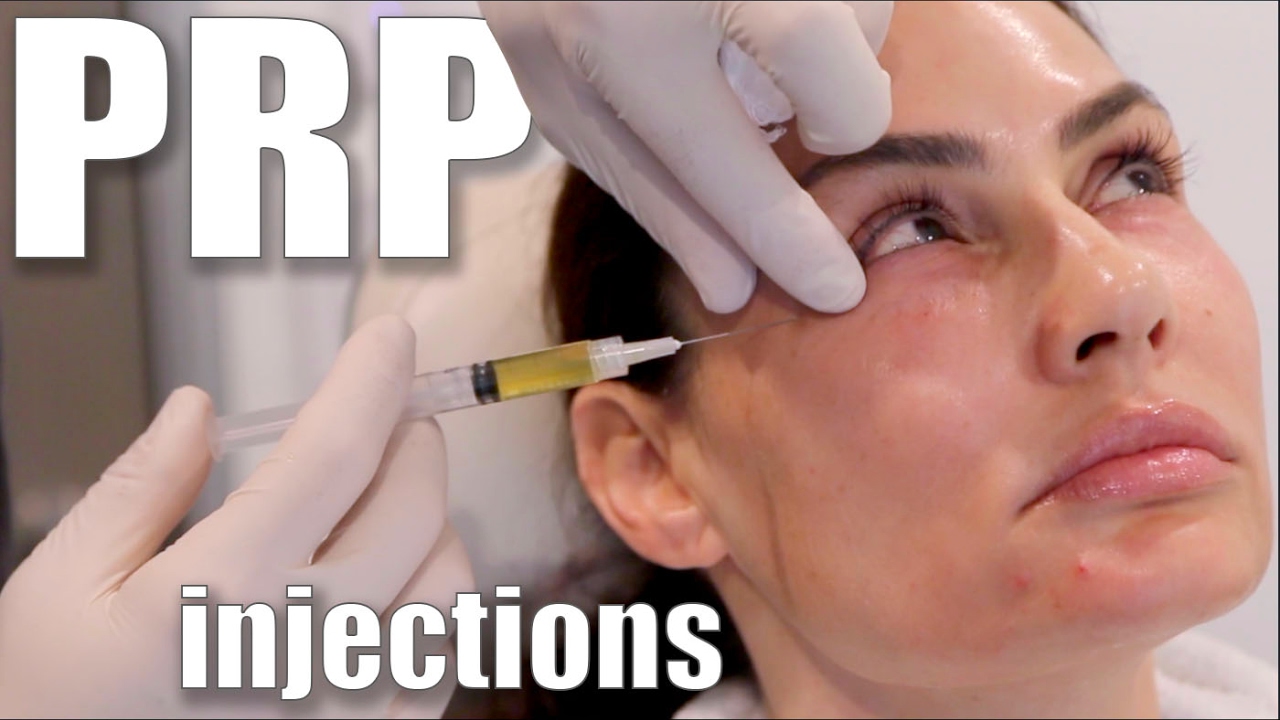What You Need to Know About PRP Microneedling
Before considering PRP Microneedling as an alternative cosmetic treatment, it’s important to know basic information. Here’s what to expect during your treatment and the recovery time and cost. There’s no reason to wait for a year or more to see results. You may even be able to use PRP Microneedling to improve your overall skin quality! You should avoid sun, alcohol, and caffeine for a few weeks before treatment. Afterward, you’ll receive a serum to smooth your skin. Minor redness is common after the procedure but will disappear within a day or two.
Side effects
One of the many benefits of PRP microneedling is the immediate and minimal downtime associated with it. Because PRP is derived from the patient’s blood, side effects are minimal. While the procedure can result in some minor skin redness, swelling, and bruising, they are rarely severe. Thermage is a good choice for women seeking a minimally invasive option that will provide the desired results quickly.
Because PRP is created from a patient’s blood, there is little risk of cross-contamination or infection. While PRP has very low risks of infection and scarring, it is not without risk. People with herpes may experience an outbreak of cold sores, so it’s important to tell your provider of any past or current cold sores. Otherwise, PRP can be harmful to the skin.
One of the most important benefits of PRP microneedling is the reduction of side effects associated with cosmetic procedures. However, some people still experience some side effects, even after completing a course of maintenance treatments. Side effects of PRP microneedling can be minimal or severe, depending on how much the treatment is done correctly. Before scheduling the procedure, discuss all risks with your doctor. A board-certified dermatologist can provide valuable information about the procedure and minimize any risks.
The procedure is relatively safe and effective, although it can result in some temporary side effects. After the procedure, you will likely experience some mild bruising, redness, and tenderness. Although these side effects are generally short-term and generally not a cause for concern, it is still worth knowing what to expect. As long as you follow the doctor’s advice and aftercare instructions, you shouldn’t experience any lasting issues.
Recovery
There are several possible side effects of PRP microneedling, and most patients see immediate results. However, patients may experience redness, swelling, and bruising. Most people can drive home after microneedling. Although the procedure can leave skin feeling dry and flaky for a few days, it can be camouflaged by applying serum or balm. Most patients see results within two weeks, but some may need several treatments to see the desired results.
Because PRP is naturally found in human skin, the procedure is relatively safe for adults. There may be minor redness and bleeding for a few days. However, recovery from PRP microneedling is fast compared to other cosmetic procedures. Patients should arrive for their appointment at least fifteen minutes early to complete the necessary paperwork and pay. In addition, qualified doctors will give patients a gown to wear and apply a topical anesthetic. The patient will have to wait 30 minutes to wear the gown after the procedure.
PRP microneedling can be used to treat several skin conditions. The growth factors and platelets in the PRP serum can penetrate the skin and help improve its tone, texture, and appearance. It effectively reduces fine lines and wrinkles, and even aging skin. This procedure is considered minimally invasive. Patients can choose to have multiple sessions to see the results they seek. In most cases, three treatment sessions are enough to see noticeable improvements. These sessions should be scheduled approximately four to six weeks apart.
Ultimately, microneedling with PRP is safe and effective to achieve youthful skin. It corrects wrinkles, age spots, stretch marks, and hyperpigmentation. It also helps with lax and enlarged pores. Combined with other cosmetic treatments, this procedure can improve a range of facial concerns. The recovery time is much quicker than undergoing surgery or medications. You’ll notice visible results within a matter of weeks.
Precautions
There are a few precautions to follow when having PRP microneedling. The procedure is generally well-tolerated in adults, with only minor irritation during the recovery process. Patients should limit sun exposure and use minimal personal skincare products during the first few days after the procedure. However, with proper care, PRP microneedling can effectively treat common skin concerns, such as wrinkles and sagging skin.
Generally, microneedling does not leave visible puncture marks. However, in some cases, it may result in temporary redness of the skin. The severity of redness varies depending on the skin’s age and the depth of treatment. While the procedure is not painful, it is not advisable for pregnant or lactating women. In addition, it is not recommended for individuals with compromised skin conditions, including rosacea, psoriasis, or acne.
If you suffer from cold sores, you should avoid exposure to the sun before the procedure. The physician may prescribe an antiviral medication before the procedure or on the day of the procedure. If you have undergone a chemical peel or superficial fillers, you should stop them at least two weeks before microneedling. After the procedure, you should avoid any strenuous activity or intense sunlight for two to three weeks.
Although there are fewer risks of infection or cross-contamination from PRP injections, you should still avoid blood thinners before the procedure. You should also avoid alcohol and certain medications after the procedure. They may affect the healing process and cause adverse effects. But the benefits of this procedure far outweigh the risks. When you have healthy skin, PRP injections can significantly impact the skin.
Cost
If you’re looking to improve your appearance, you’ve probably been wondering about the cost of PRP microneedling. It can cost anywhere from $500 to $1300 per treatment, depending on the area to be treated. For example, in Memphis, TN, the procedure will run you approximately $425 per session. You can find the most accurate price by scheduling an in-person consultation with your dermatologist. However, you’ll probably want to budget well in advance and consider your finances when looking for a professional.
The American Academy of Dermatology suggests a few factors before undergoing a cosmetic procedure. Make sure to ask for before-and-after pictures. Learn about the dermatologist’s credentials and confirm board certification. Finally, discuss the expected results. While PRP microneedling isn’t cheap, it’s still much less expensive than many more invasive surgeries, like a facelift or liposuction.
The process is relatively painless, but it can be expensive. Newer equipment costs more than older models, but newer equipment can help the doctor complete the procedure faster and safer. Plasma enrichment is necessary in some cases since not all people have enough rich platelets to undergo the procedure. Fortunately, nutritional components can be used to boost your plasma concentration. Depending on the treatment you choose, the procedure can be quite expensive.
PRP microneedling is relatively quick. The process takes approximately 30 minutes, compared to many other cosmetic procedures. You should arrive at least 15 minutes before your appointment to complete any paperwork and pay. You may even be given a gown or topical anesthetic before the procedure. Upon completing the procedure, you should avoid wearing heavy creams or sauna for at least 24 hours. If you’re nervous about the process, you may want to ask about the cost.
Procedures
PRP microneedling has become an increasingly popular treatment for aging skin. Unlike more invasive cosmetic procedures, this treatment requires no downtime and no incisions. In addition to tightening skin, it can also help reduce the appearance of wrinkles and other signs of aging. These results are permanent and last for up to two years, depending on your skin condition. Although PRP microneedling is not suitable for everyone, it is an excellent option for those who have trouble with their skin.
Before undergoing a PRP procedure, your physician will collect a small amount of blood from your arm. This sample is much smaller than a blood test, and the physician will spin it in a centrifuge to separate the blood into red blood cells and plasma. This process increases platelet count to four times that of normal. The physician will then apply the plasma to your face, using a microneedle to facilitate penetration. In some cases, the PRP will be injected into deeper layers of the skin. After the procedure, you will be instructed to avoid heavy creams and saunas for at least 24 hours to ensure that your skin does not react negatively.
Generally, the procedure will involve a local anesthetic administered through a needle and is left on your skin for about 20 minutes. Your nurse will then draw blood and spin the sample in a centrifuge to separate red blood cells from the PRP. After the PRP is spun, the needle will be inserted into a joint capsule or other location. The injection site will bleed during the treatment.

